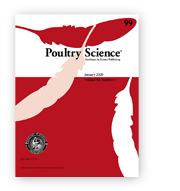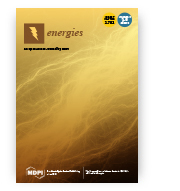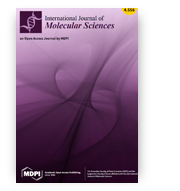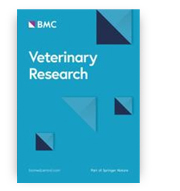The selected goose meat quality traits in relation to various types of heat treatment
Janina Wołoszyn, Monika Wereńska, Zuzanna Goluch, Gabriela Haraf, Andrzej Okruszek, Mirosława Teleszko, Barbara Król
Poultry Science
 The effect of water bath cooking (WBC), oven convection roasting (OCR), grilling (G), pan frying (PF) on selected physical properties of goose meat was compared in this study. A measurement of cooking loss, texture, color parameters, and sensory evaluation was carried out. The experimental material covered 96 breast muscles cut from carcasses of 17-week-old “Polish oat geese.” The kind of goose meat (with and without skin) and the type of heat treatment affected cooking loss, shear force (SF), and rheological parameters (hardness, cohesiveness, gumminess, and chewiness). The water bath–cooked and pan-fried samples for both kinds of meat were characterized by lower cooking loss than other ones. Goose meat with skin and subcutaneous fat showed higher cooking loss and lower SF value, hardness, gumminess, and chewiness than that without skin for all methods. The water bath–cooked samples were characterized by the lowest SF value, hardness, and chewiness for both kinds of meat. They had the highest value of L∗ parameter and were characterized by a lighter color among others, too. Pan-fried meat showed the highest value of a∗ and lowest of ho parameters; the color of these samples was redder. Moreover, the lower C values of oven convection-roasted and grilled samples showed that they were brighter. According to the Comission Internationale de l’Eclairage classification, the ΔE parameter only for G and OCR indicated noticeable color differences (<2), whereas other pairs had visible differences. The method of cooking affected sensory descriptors such as the intensity of flavor and aroma, tenderness, juiciness, springiness, cohesiveness, and overall palatability of goose meat. The goose samples of PF, G, and OCR were characterized as very good and WBC as extremely desirable overall palatability. However, in the next stage of research, there is a need to study changes in the chemical composition, the degree of lipid oxidation, and the nutritional value of this meat that underwent different methods of cooking. Only then it will be possibly to clearly determine which method of the heat treatment of goose meat is optimal.
The effect of water bath cooking (WBC), oven convection roasting (OCR), grilling (G), pan frying (PF) on selected physical properties of goose meat was compared in this study. A measurement of cooking loss, texture, color parameters, and sensory evaluation was carried out. The experimental material covered 96 breast muscles cut from carcasses of 17-week-old “Polish oat geese.” The kind of goose meat (with and without skin) and the type of heat treatment affected cooking loss, shear force (SF), and rheological parameters (hardness, cohesiveness, gumminess, and chewiness). The water bath–cooked and pan-fried samples for both kinds of meat were characterized by lower cooking loss than other ones. Goose meat with skin and subcutaneous fat showed higher cooking loss and lower SF value, hardness, gumminess, and chewiness than that without skin for all methods. The water bath–cooked samples were characterized by the lowest SF value, hardness, and chewiness for both kinds of meat. They had the highest value of L∗ parameter and were characterized by a lighter color among others, too. Pan-fried meat showed the highest value of a∗ and lowest of ho parameters; the color of these samples was redder. Moreover, the lower C values of oven convection-roasted and grilled samples showed that they were brighter. According to the Comission Internationale de l’Eclairage classification, the ΔE parameter only for G and OCR indicated noticeable color differences (<2), whereas other pairs had visible differences. The method of cooking affected sensory descriptors such as the intensity of flavor and aroma, tenderness, juiciness, springiness, cohesiveness, and overall palatability of goose meat. The goose samples of PF, G, and OCR were characterized as very good and WBC as extremely desirable overall palatability. However, in the next stage of research, there is a need to study changes in the chemical composition, the degree of lipid oxidation, and the nutritional value of this meat that underwent different methods of cooking. Only then it will be possibly to clearly determine which method of the heat treatment of goose meat is optimal.
10.1016/j.psj.2020.09.062
The Impact of Particles Comminution on Mechanical Durability of Wheat Straw Briquettes
Arkadiusz Dyjakon, Łukasz Sobol, Mateusz Krotowski, Krzysztof Mudryk, Krzysztof Kawa
Energies
 Briquetting is one of the recommended biomass agglomeration processes. The material subjected to briquetting gains valuable functional features related to higher energy density, appropriate moisture content, and increased bulk density. However, the briquettes need high mechanical durability to maintain high quality during transportation, loading, and other logistic steps before they will be delivered to the final consumer and utilized for energy purposes. The mechanical durability depends on many factors, including the particles comminution of the compacted biomass. Therefore, the aim of this study was to analyze the impact of particle comminution on the mechanical durability of wheat straw briquettes. The research was carried out in accordance with the international standard for solid biofuels PN-EN ISO 17831-1:2016-02. The briquettes were produced from three different fractions: 0–2 mm, 2–15 mm, and 15–45 mm. To obtain more data related to the mechanical durability of briquettes, the tests were also carried out outside the ISO standard conditions. During the investigations, the working chamber operation time was extended from 5 to 60 min, and the rotational speed of the working chamber was increased to 25 and 30 rpm, respectively. The results indicated that the mechanical durability index (Du) of briquettes decreases along with the increase in the particle size. According to the PN-EN ISO 17831-1:2016-02 standard, the highest mechanical durability was achieved for the 0–2 mm fraction (Du = 91.17%) followed by the 2–15 mm fraction (Du = 88.12%), and the lowest was achieved for the 15–45 mm fraction (Du = 84.48%). It was noticed that the increase in the working chamber operation time resulted in a decrease of the Du value. Moreover, the difference in mechanical durability (between t5 = 5 min and t60 = 60 min) was greater for a larger fraction (∆Du = 16.26% for 0–2 mm fraction, ∆Du = 21.04% for 2–15 mm fraction, and ∆Du = 23.43% for 15–45 mm fraction). It was also observed that the increase of the rotational speed of the working chamber caused a slight decrease in the value of the mechanical durability of briquettes for all investigated fractions.
Briquetting is one of the recommended biomass agglomeration processes. The material subjected to briquetting gains valuable functional features related to higher energy density, appropriate moisture content, and increased bulk density. However, the briquettes need high mechanical durability to maintain high quality during transportation, loading, and other logistic steps before they will be delivered to the final consumer and utilized for energy purposes. The mechanical durability depends on many factors, including the particles comminution of the compacted biomass. Therefore, the aim of this study was to analyze the impact of particle comminution on the mechanical durability of wheat straw briquettes. The research was carried out in accordance with the international standard for solid biofuels PN-EN ISO 17831-1:2016-02. The briquettes were produced from three different fractions: 0–2 mm, 2–15 mm, and 15–45 mm. To obtain more data related to the mechanical durability of briquettes, the tests were also carried out outside the ISO standard conditions. During the investigations, the working chamber operation time was extended from 5 to 60 min, and the rotational speed of the working chamber was increased to 25 and 30 rpm, respectively. The results indicated that the mechanical durability index (Du) of briquettes decreases along with the increase in the particle size. According to the PN-EN ISO 17831-1:2016-02 standard, the highest mechanical durability was achieved for the 0–2 mm fraction (Du = 91.17%) followed by the 2–15 mm fraction (Du = 88.12%), and the lowest was achieved for the 15–45 mm fraction (Du = 84.48%). It was noticed that the increase in the working chamber operation time resulted in a decrease of the Du value. Moreover, the difference in mechanical durability (between t5 = 5 min and t60 = 60 min) was greater for a larger fraction (∆Du = 16.26% for 0–2 mm fraction, ∆Du = 21.04% for 2–15 mm fraction, and ∆Du = 23.43% for 15–45 mm fraction). It was also observed that the increase of the rotational speed of the working chamber caused a slight decrease in the value of the mechanical durability of briquettes for all investigated fractions.
10.3390/en13236186
PssJ Is a Terminal Galactosyltransferase Involved in the Assembly of the Exopolysaccharide Subunit in Rhizobium leguminosarum bv. Trifolii
Małgorzata Marczak, Magdalena Wójcik, Kamil Żebracki, Anna Turska-Szewczuk, Kamila Talarek, Dominika Nowak, Leszek Wawiórka, Marcin Sieńczyk, Agnieszka Łupicka-Słowik, Kamila Bobrek, Marceli Romańczuk, Piotr Koper, Andrzej Mazur
International Journal of Molecular Sciences
 Rhizobium leguminosarum bv. trifolii produces exopolysaccharide (EPS) composed of glucose, glucuronic acid, and galactose residues at a molar ratio 5:2:1. A majority of genes involved in the synthesis, modification, and export of exopolysaccharide are located in the chromosomal Pss-I region. In the present study, a ΔpssJ deletion mutant was constructed and shown to produce EPS lacking terminal galactose in the side chain of the octasaccharide subunit. The lack of galactose did not block EPS subunit translocation and polymerization. The in trans delivery of the pssJ gene restored the production of galactose-containing exopolysaccharide. The mutant was compromised in several physiological traits, e.g., motility and biofilm production. An impact of the pssJ mutation and changed EPS structure on the symbiotic performance was observed as improper signaling at the stage of molecular recognition, leading to formation of a significant number of non-infected empty nodules. Terminal galactosyltransferase PssJ was shown to display a structure typical for the GT-A class of glycosyltransferases and interact with other GTs and Wzx/Wzy system proteins. The latter, together with PssJ presence in soluble and membrane protein fractions indicated that the protein plays its role at the inner membrane interface and as a component of a larger complex.
Rhizobium leguminosarum bv. trifolii produces exopolysaccharide (EPS) composed of glucose, glucuronic acid, and galactose residues at a molar ratio 5:2:1. A majority of genes involved in the synthesis, modification, and export of exopolysaccharide are located in the chromosomal Pss-I region. In the present study, a ΔpssJ deletion mutant was constructed and shown to produce EPS lacking terminal galactose in the side chain of the octasaccharide subunit. The lack of galactose did not block EPS subunit translocation and polymerization. The in trans delivery of the pssJ gene restored the production of galactose-containing exopolysaccharide. The mutant was compromised in several physiological traits, e.g., motility and biofilm production. An impact of the pssJ mutation and changed EPS structure on the symbiotic performance was observed as improper signaling at the stage of molecular recognition, leading to formation of a significant number of non-infected empty nodules. Terminal galactosyltransferase PssJ was shown to display a structure typical for the GT-A class of glycosyltransferases and interact with other GTs and Wzx/Wzy system proteins. The latter, together with PssJ presence in soluble and membrane protein fractions indicated that the protein plays its role at the inner membrane interface and as a component of a larger complex.
10.3390/ijms21207764
Insight into the intestinal microbiome of farrowing sows following the administration of garlic (Allium sativum) extract and probiotic bacteria cultures under farming conditions
Marta Satora, Marcin Magdziarz, Anna Rząsa, Krzysztof Rypuła, Katarzyna Płoneczka-Janeczko
BMC Veterinary Research
 Background: Due to the tendency to reduce antibiotic use in humans and animals, more attention is paid to feed additives as their replacement. Crucial role of feed additives is to improve the health status, production efficiency and performance. In this original research, we estimate the potential influence of garlic (Allium sativum) extract and probiotic formula including Enterococcus faecium, Lactobacillus rhamnosus and Lactobacillus fermentum on the intestinal microbiota of sows, using the next generation sequencing method (NGS). Results: Our results indicate that the overall species richness as well as the composition of swine gut microbiota may be shaped by regular feeding with supplemented additives. On the Family and Genus level both additives (garlic extract and probiotics) seem to decrease microbiome diversity and richness. However, when it comes to garlic supplementation, we found the opposite trend on the Species level. Conclusions: The analysis of the selected microbial function indicates that both additives used in this study (garlic extract and composition of probiotics) seem to create a greater metabolic potential than estimated in a control group of sows. A general trend of losing or decreasing members of pathogenic species in the swine microbiome seems to occur in relation to both supplemented additives. In the prevention of some bacterial diseases supplemented additives could be considered for future use.
Background: Due to the tendency to reduce antibiotic use in humans and animals, more attention is paid to feed additives as their replacement. Crucial role of feed additives is to improve the health status, production efficiency and performance. In this original research, we estimate the potential influence of garlic (Allium sativum) extract and probiotic formula including Enterococcus faecium, Lactobacillus rhamnosus and Lactobacillus fermentum on the intestinal microbiota of sows, using the next generation sequencing method (NGS). Results: Our results indicate that the overall species richness as well as the composition of swine gut microbiota may be shaped by regular feeding with supplemented additives. On the Family and Genus level both additives (garlic extract and probiotics) seem to decrease microbiome diversity and richness. However, when it comes to garlic supplementation, we found the opposite trend on the Species level. Conclusions: The analysis of the selected microbial function indicates that both additives used in this study (garlic extract and composition of probiotics) seem to create a greater metabolic potential than estimated in a control group of sows. A general trend of losing or decreasing members of pathogenic species in the swine microbiome seems to occur in relation to both supplemented additives. In the prevention of some bacterial diseases supplemented additives could be considered for future use.
10.1186/s12917-020-02659-y









